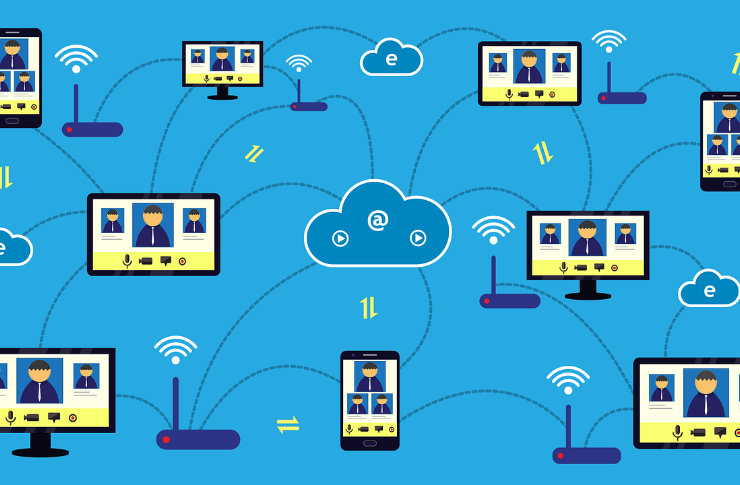Affinity Spaces: The New Frontier of Digital Community Building
Imagine a world where your passions, no matter how niche, connect you with like-minded individuals across the globe. Welcome to the era of affinity spaces, digital havens reshaping how we form communities and share knowledge. These virtual gathering spots are revolutionizing social interaction, learning, and identity formation in ways previously unimaginable. Read below to explore the fascinating world of affinity spaces and their profound impact on modern society.

The Genesis of Affinity Spaces
The concept of affinity spaces was first introduced by James Paul Gee in 2004, describing informal learning environments where participants gather based on shared endeavors. Unlike traditional communities bound by geography or institutions, affinity spaces transcend physical boundaries, allowing individuals to connect solely based on mutual interests or goals.
As digital technologies evolved, so did the scope and complexity of these spaces. What began as simple online forums has now expanded into sophisticated platforms encompassing diverse media forms, from text-based discussions to immersive virtual reality experiences. This evolution has dramatically altered the landscape of social interaction and knowledge sharing.
The Anatomy of Modern Affinity Spaces
Modern affinity spaces are characterized by their flexibility, accessibility, and user-driven content. These digital environments typically feature several key elements that foster engagement and community growth:
-
Shared passion or interest as the central organizing principle
-
Opportunities for both novices and experts to contribute
-
Multiple forms of participation and expression
-
A culture of peer-to-peer learning and mentorship
-
Continuous content creation and curation by community members
These features create dynamic ecosystems where knowledge is constantly shared, refined, and expanded upon by participants at all levels of expertise.
The Sociological Impact of Affinity Spaces
The rise of affinity spaces has profound implications for how individuals form identities, acquire knowledge, and navigate social relationships. Sociologists have observed several key trends emerging from this digital phenomenon:
-
Decentralization of expertise: Traditional hierarchies of knowledge are being flattened, with expertise distributed across the community rather than concentrated in a few authoritative figures.
-
Identity fluidity: Participants can explore and adopt multiple identities based on their interests, leading to more complex and nuanced self-expression.
-
Global micro-communities: Niche interests that might be isolating in physical communities can now support thriving global networks.
-
Accelerated skill acquisition: The collaborative nature of affinity spaces often results in rapid learning and skill development among participants.
-
Redefined social capital: Value within these communities is often based on contribution and engagement rather than traditional status markers.
These shifts are reshaping how individuals perceive themselves and their place in the world, challenging long-held societal norms and structures.
Case Studies: Affinity Spaces in Action
Examining specific examples of successful affinity spaces provides insight into their diverse applications and impacts:
-
Ravelry: A community for fiber artists that has revolutionized pattern sharing and craft education.
-
GitHub: A collaborative platform for programmers that has become essential to open-source software development.
-
Twitch: A streaming platform that has evolved into a complex ecosystem of gaming communities and subcultures.
-
DeviantArt: An online art community that has launched careers and sparked new artistic movements.
-
Goodreads: A book-lovers network that has transformed how readers discover and discuss literature.
Each of these spaces demonstrates the power of shared passion in creating vibrant, productive communities that transcend traditional social boundaries.
Challenges and Concerns
While affinity spaces offer numerous benefits, they also present unique challenges:
-
Echo chambers: The risk of reinforcing existing beliefs and limiting exposure to diverse perspectives.
-
Digital divide: Unequal access to technology can exacerbate social inequalities.
-
Privacy and security: The potential for data misuse and online harassment within these spaces.
-
Authenticity and trust: Navigating the complexities of online identities and relationships.
-
Balancing online and offline life: The potential for digital communities to detract from real-world interactions.
Addressing these concerns is crucial for the healthy development and sustainability of affinity spaces as they continue to shape social dynamics.
The Future of Digital Community Building
As technology advances, the potential of affinity spaces continues to expand. Emerging trends suggest several exciting directions:
-
Integration of artificial intelligence to enhance community management and personalization.
-
Increased use of augmented and virtual reality to create more immersive shared experiences.
-
Development of cross-platform ecosystems that seamlessly connect various affinity spaces.
-
Enhanced tools for collaborative creation and real-time global cooperation.
-
Evolution of economic models within affinity spaces, potentially reshaping traditional marketplaces.
These developments promise to further blur the lines between digital and physical communities, creating new paradigms for social interaction and collective action.
In conclusion, affinity spaces represent a profound shift in how we conceptualize community, learning, and social identity. As these digital environments continue to evolve, they offer both exciting opportunities and complex challenges for individuals and society at large. Understanding and navigating this new frontier of digital community building will be crucial for thriving in an increasingly interconnected world.




